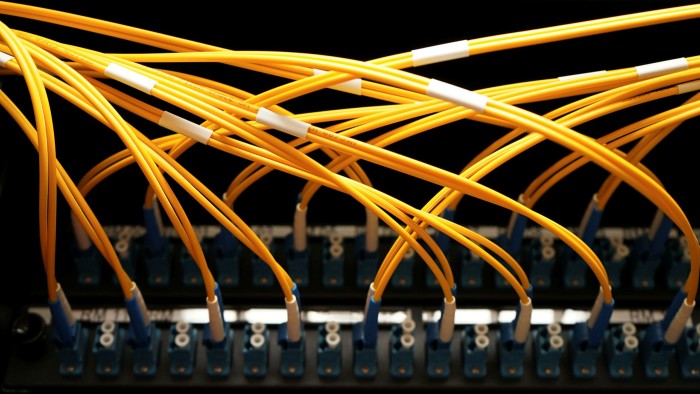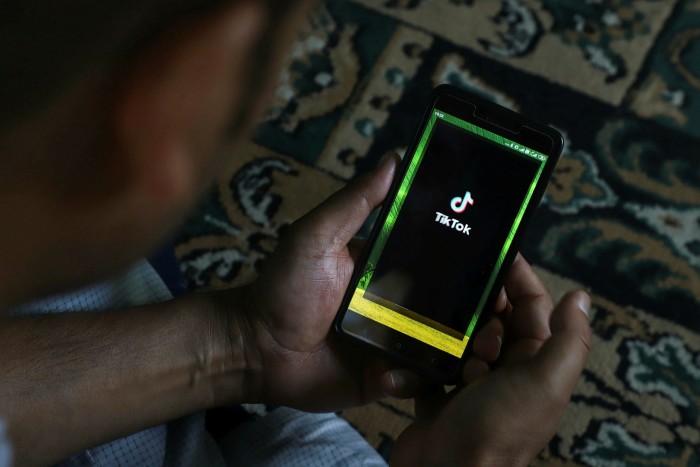National security concerns pile pressure on ‘splinternet’ cracks

Simply sign up to the Technology myFT Digest -- delivered directly to your inbox.
The internet was, at one time, looked upon as a potential tech utopia, yet three decades after the launch of the world wide web — a name that holds the promise of a global network — the reality looks increasingly fragmented.
Instead of a single internet, there are now dozens around the world, divided not only by the kind of content that they deem legal but also the infrastructure they contain. Because while the internet may feel ephemeral, it relies upon physical telecoms equipment: the sort of hardware that has increasingly been scrutinised in debates around national security.
Experts dubbed it the ‘splinternet’, and they have been warning about it for years. “Bit by bit, the internet is becoming more cordoned off,” wrote Katja Bego, principal researcher at UK innovation foundation Nesta, back in 2016. “The time of the internet of fun and games, of unfettered access, is quickly coming to an end.”
The gulf between different versions — and visions — of the internet has only widened in the past half a decade, driven by geopolitical and trade tensions. This Balkanisation risks pushing up prices and potentially hurting customer choice, as products are shut out of markets that consider them hostile. But, for governments, the issue is not just the costs that the splinternet imposes; it is also the need to balance security risks with commercial interests.
The concept of the splinternet also reflects how the digital space has become crucial in interstate one-upmanship.
China’s “Great Firewall” of internet censorship has long been the most prominent example, allowing for the growth of domestic tech titans (which have, themselves, since suffered under Beijing’s regulatory crackdown).
Battle lines are also being drawn in standard-setting in forums, such as the International Telecommunication Union. For example, an Internet of Things — of connected devices — built on Chinese standards might be mutually exclusive to US technologies. That would force countries to choose between diverging tech stacks when it comes to powering their core digital infrastructure.
Beijing is not the only party looking to keep out external technology. Last year, the UK told mobile providers that 5G equipment from Chinese tech group Huawei must be removed by 2027. In the US, Huawei has been on the “entity list” since 2019 — a blacklist of companies, and affiliates, to which US firms cannot sell any kind of technology without a licence.
Software has also faced growing restrictive pressure, with India banning Chinese apps such as TikTok. The Indian Ministry of Information Technology deemed the apps “prejudicial to sovereignty and integrity of India, defence of India, security of state and public order”.

Huawei’s woes in the UK demonstrate one of the more obvious costs of the splinternet for both private companies and governments: Huawei’s 5G kit was cheaper than that from European rivals such as Ericsson so, being forced to rip out and replace existing Huawei hardware, is expensive.
A year ago, even Borje Ekholm, Ericsson’s chief executive, criticised Sweden’s decision to ban Huawei, telling the Financial Times: “For Ericsson and Sweden, we’re built on free trade. We’re built on the opportunity to trade freely.”
“Slowing the rollout of 5G is also a risk for the economy,” Ekholm added. And experts agree that unlocking many of the new wave of innovative technologies, such as the Internet of Things and smart cities, relies on 5G.
Governments’ ability to constrict physical supply chains can affect companies in their domestic markets, too. In May 2020, the US government said it would tighten restrictions on access to microchips for Huawei and its subsidiaries — leading the company to say that the sanctions had put its survival at stake.
However, these costs of the splinternet cannot be weighed purely in monetary terms. Protecting national security is vital in an age where digitisation is expanding across key sectors, even as the preparedness of critical systems remains unclear. In an increasingly interconnected world, core telecoms equipment can be used to deploy dangerous attacks.
Moreover, a degree of flexibility and uncertainty is perhaps to be expected in this decision-making. Security assessments of 5G components, for example, can change significantly; what is important is that governments are forthright and as transparent when it comes to decisions. Revealing their reasons may be tedious, but at least shows that careful consideration has taken place.
Failing to do so plays into the other reason for the splinternet: geopolitical tussles for dominance between countries, mixed in with petty attempts to win over domestic audiences by displaying macho zeal. Worse still, mixing cyber security concerns with purely economic interests — for example, the search for better trade deals — risks undermining the former.
The splinternet appears to be here to stay, but governments should not exacerbate it without good measure. Keeping out potential weaknesses from core sectors is laudable; driving up costs for businesses and consumers to score political points, less so.
Comments